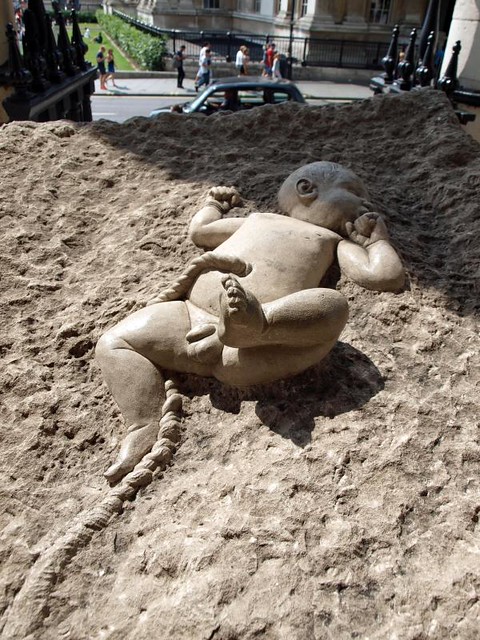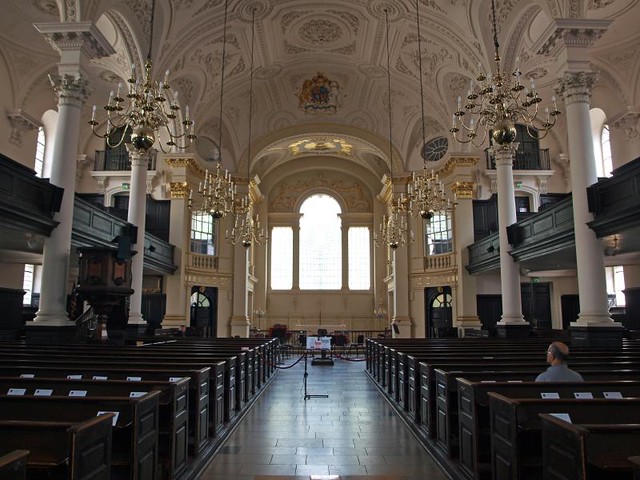St Martin’s stands on the north-east comer of the square, traffic swirling past its steps along St Martin’s Place and Duncan Street. There has been a church here since the 12th century when it very truly stood “in the fields”. It is said that the parish was enlarged by Henry VIII’s orders so that funerals might not pass through his palace of Whitehall on their way to burial at St Margaret’s, Westminster, and a new church was built in 1544. By the 18th century, a new structure was needed again and this was built by James Gibbs in 1722-6. He gave it a magnificent temple front with six huge Corinthian columns set on steps; above them is a pediment and from behind that soars the noble spire. The church itself, of Portland stone, is rectangular with galleries. The walls are panelled with unusual box pews and the roof is a tunnel vault. The original organ was given by George I as a compensation for his inability to perform his duties as churchwarden; it is now at St Mary’s, Wootton-under-Edge, Gloucestershire, and a new larger instrument has been installed. There is a pretty oval font of 1689, and a hexagonal pulpit with thin twisted balusters. This pulpit was originally a three-decker one, for parson, clerk and reader, and as such it can be seen in Hogarth’s print of the Industrious Apprentice at Church. Charles II was christened. and Nell Gwynn was buried here. St Martin is the patron saint of beggars, of the destitute and of drunkards, so that the noble work of helping the unfortunate, to which the clergy of this church have dedicated themselves, is particularly apt. It was a churchwarden of St Martin’s who tried to help Francis Thompson and it was surely of this church that the poet thought when he wrote of “Jacob’s ladder/ Pitched between Heaven and Charing Cross”. The Reverend Dick Sheppard, who served at the Front in the First World War, returned to St Martin’s determined to create a place where all who were in need could come and find the same unquestioning help and comradeship that he had known in the trenches. He had a vision - “I saw a great church standing in the greatest square in the greatest city in the world” - and he made the crypt of St Martin’s into a club to which all might come and find welcome. His ideals and work have been carried on by those who have followed him.
Saturday, 2 August 2014
London, Westminster - St Martin in the Fields
An almost perfect early C18th building - all box pews, galleries and neoclassical design - what's not to love? The surviving monuments from the earlier church, and later, are relocated to the crypt alongside a gallery and cafe. If you could just relocate the tourists St Martin would be my ideal urban church.
Subscribe to:
Post Comments (Atom)



No comments:
Post a Comment